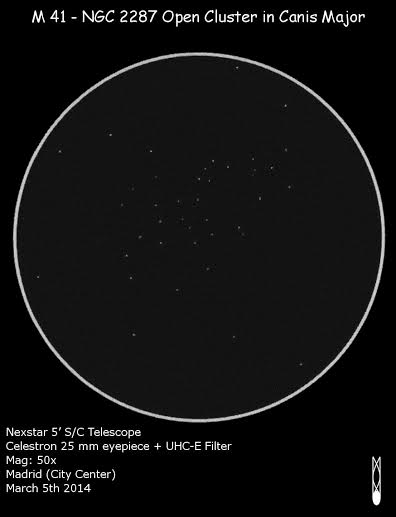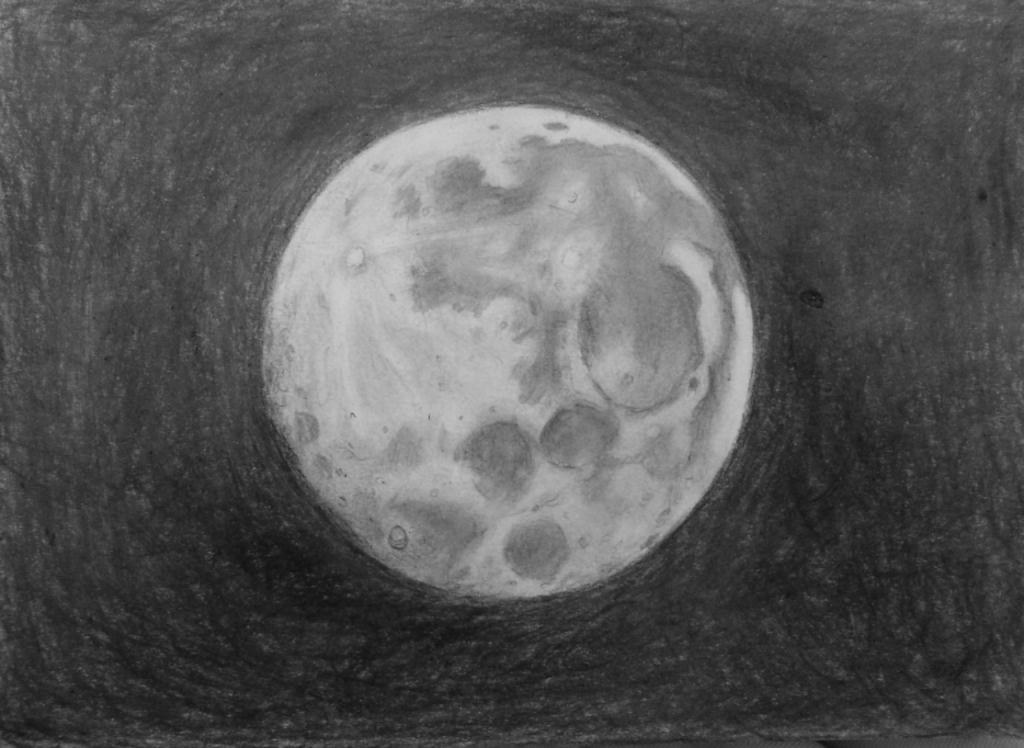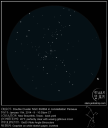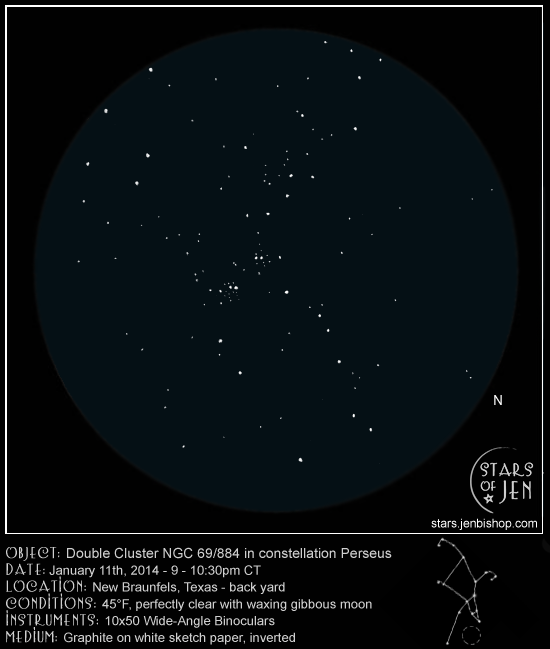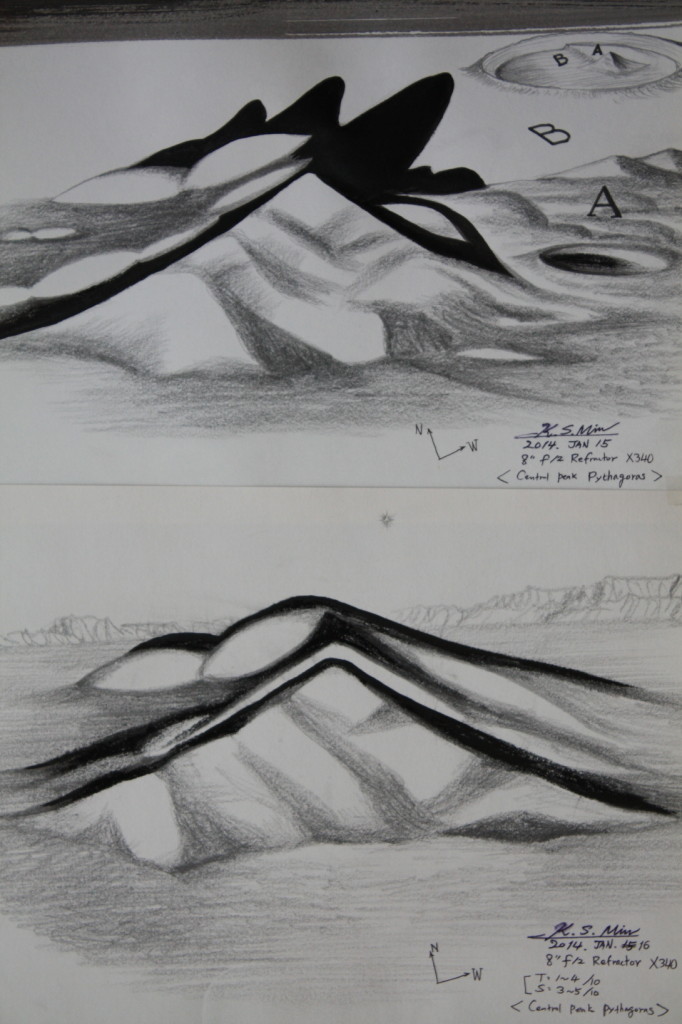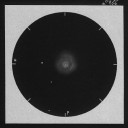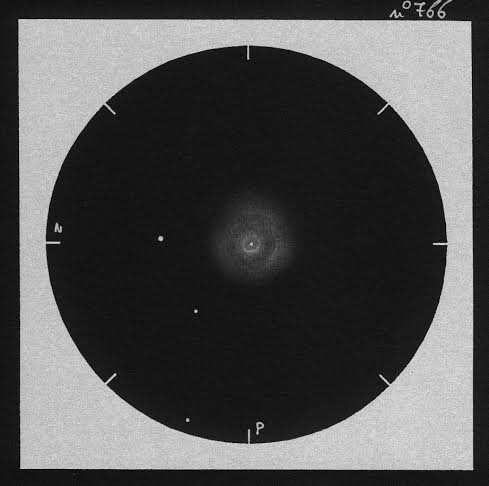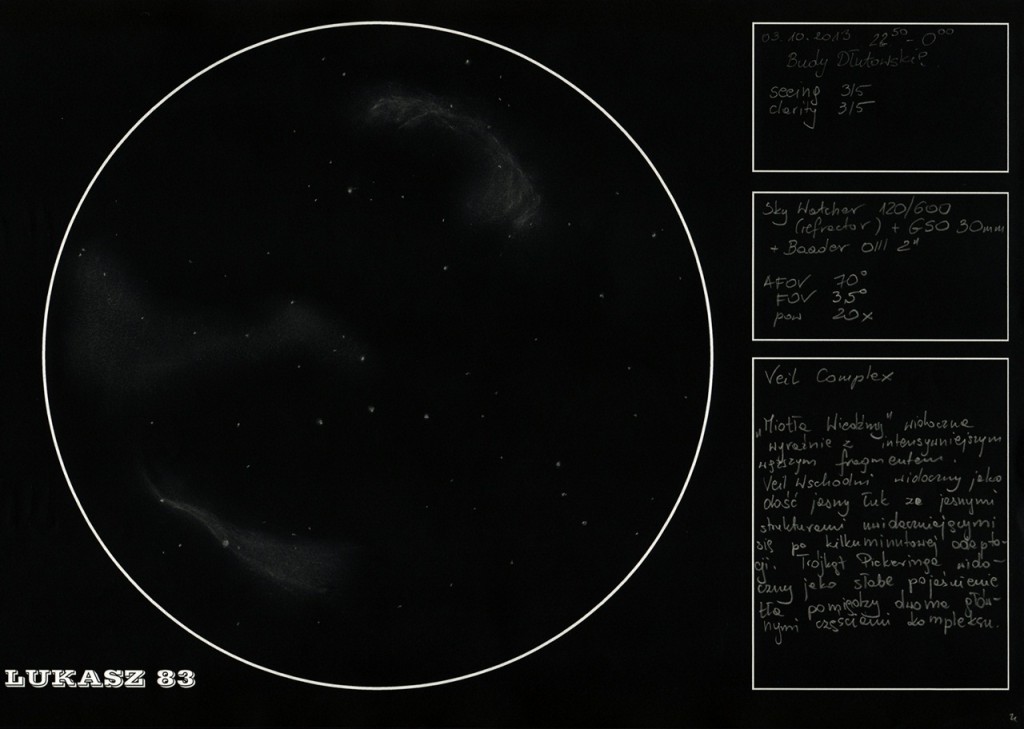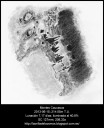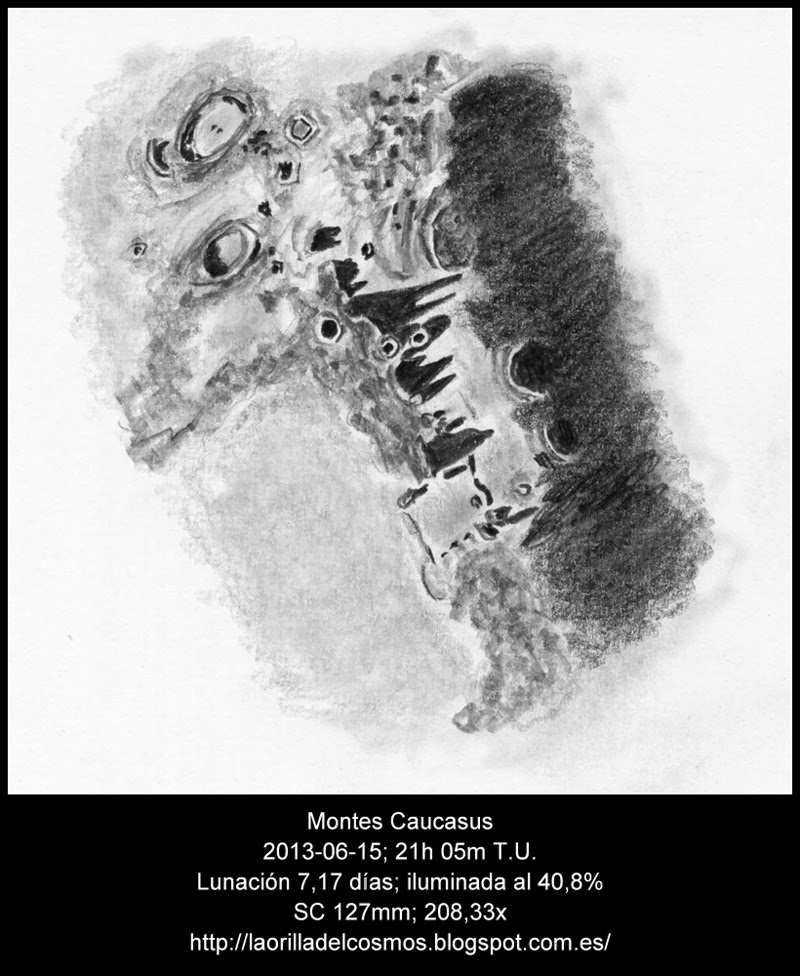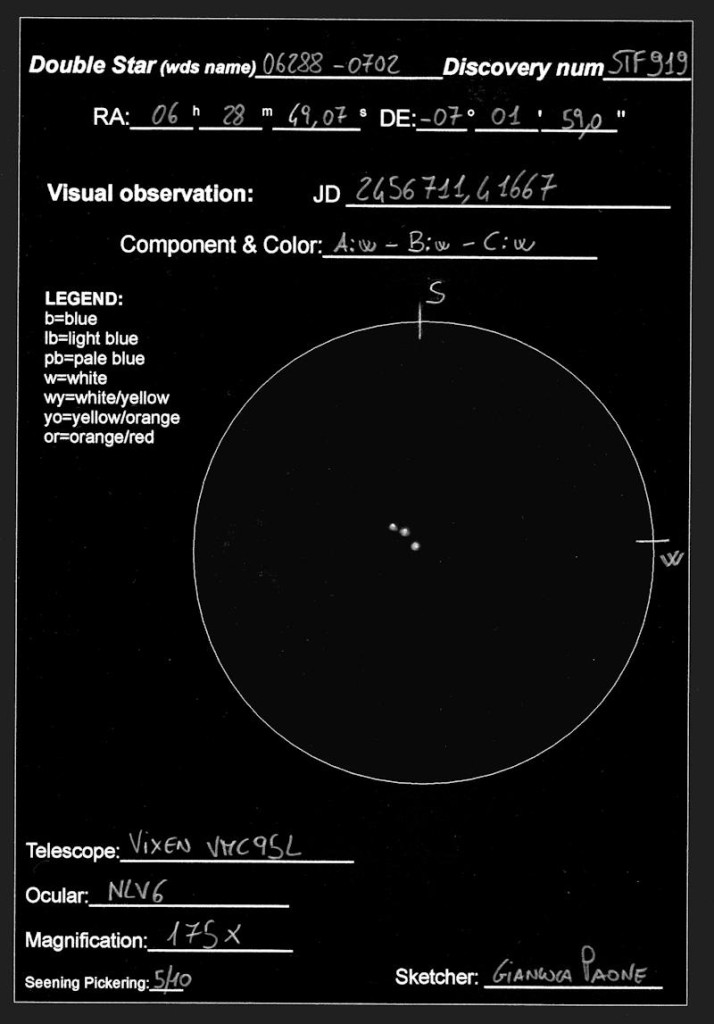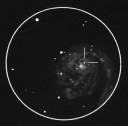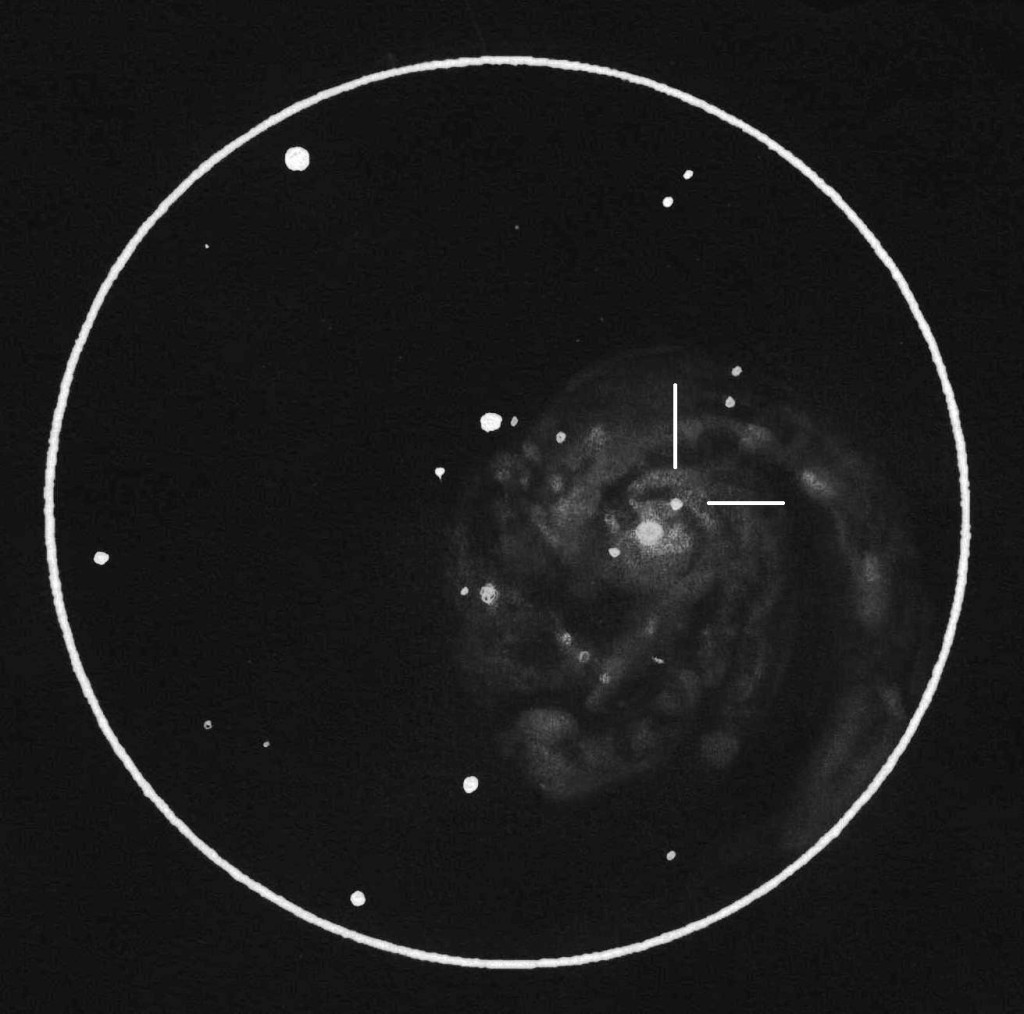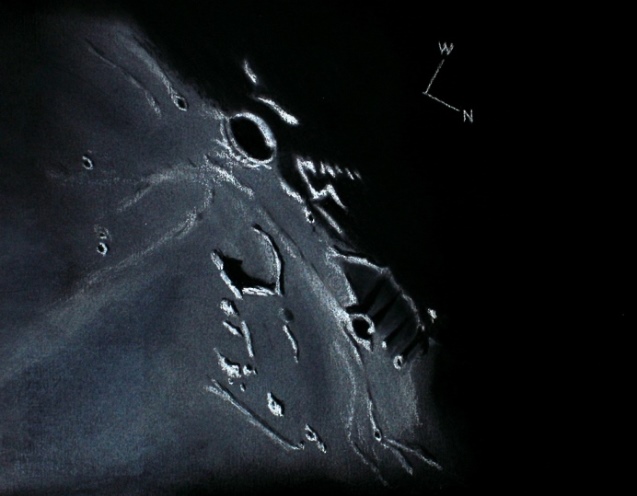
The kilometer high rim of Prinz (47 km.) crater was casting a shadow across its own lava flooded floor. The uplifted Harbinger mountains were also casting fine shadows in this region of the lunar surface with its large magma ponds pushing up and freezing in the distant past. The uplifting doming in the region created many fissures for lava escape and flooding to occur. The fissures can be seen clearly on nights of steading seeing. I was denied that detailed view on this night. From the crater Krieger (22 km.) north and somewhat east of Aristarchus (40 km.) four distinct long shadows could be seen crossing to the 70 km. fault called Toscanelli at the edge of the Aristarchus plateau where the terminator was located during the rendering of this sketch.
A fine view in any telescope.
Sketching:
For this sketch I used: black Canson paper, white and black Conte’
pastel pencils and blending stumps, white Pearl eraser
Telescope: 10 inch f/ 5.7 Dobsonian and 9 mm eyepiece 161x
Date: 06-20-2013, 02:40 – 04:10 UT
Temperature: 19° C (68° F)
Partly cloudy, hazy
Seeing: Antoniadi IV (poor)
Frank McCabe


